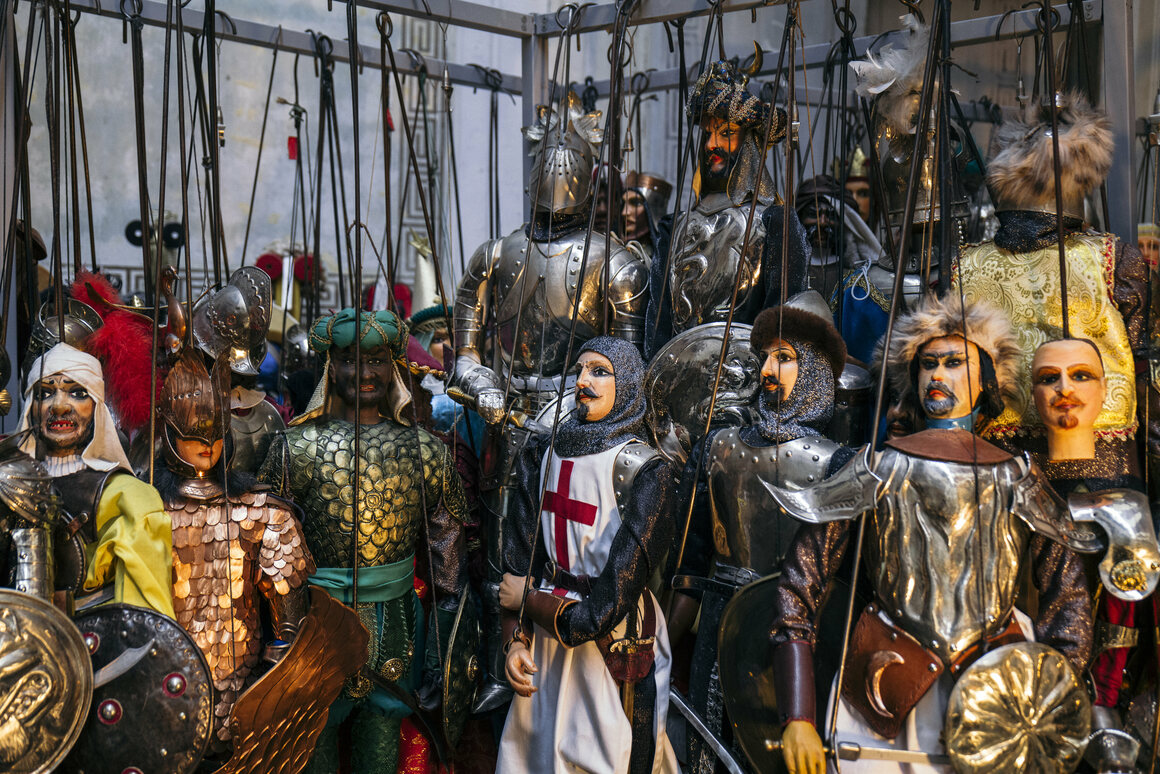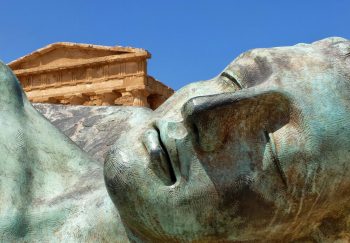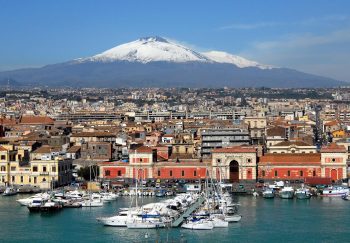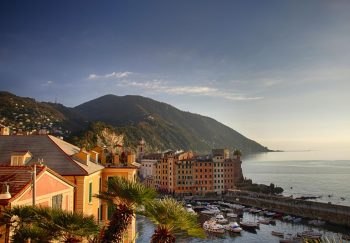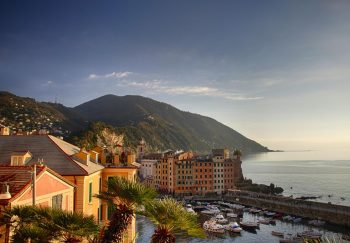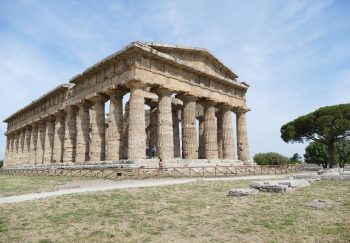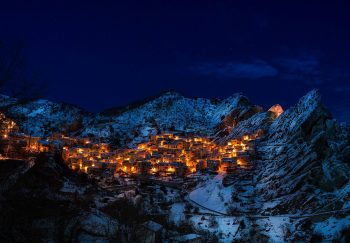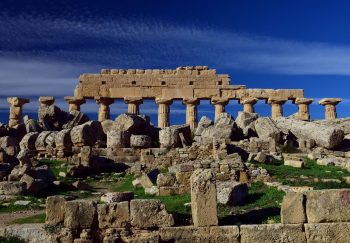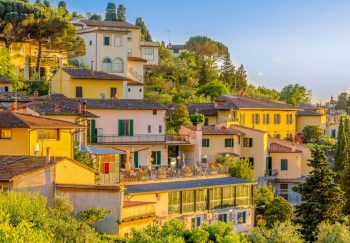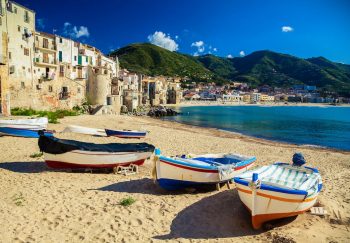Teatro Argento in Palermo, Sicily
This was not a film scene or live execution. It was the last act of Opera Dei Pupi’s (Puppet Theater), performance at Teatro Argento, Palermo. The wooden puppets are 32 inches high and weigh 22-plus pounds. They are operated by master puppeteers above the stage.
The theater is enlarged to show museum photos from past generations of Argento puppeteers. Carol L. Bowman photo
Puppet Theatre Declared a UNESCO Intangible Cultural Heritage Tradition for 2008
We met the Argento family puppet masters on a recent trip to Sicily’s timeless traditions. It was one of the most memorable experiences of our trip. We entered Teatro Argento through an arched doorway in front of Palermo’s Cathedral on Palazzo Asmundo.
Inside, Vincenzo Argento (81) and his son Nicola (Nicola) waited for the opportunity to share five generations of passions and historical involvement in Puppet Theater.
It is one of the oldest cultural art forms in Sicily, dating back to the Greek period. In 2008, it was designated a UNESCO Intangible Cultural Heritage Tradition.
Puppet Theater was established in Roman and Greek times as a means to communicate morality and political issues to the public. The rod that ran through wooden puppets allowed for manipulation by the puppeteer. This exact method is still used in classic Sicilian puppetry.
What are Puppets?
It is not a good idea to interchange the terms marionettes and puppets. There is a difference between the two. For all puppet types – shadow, water, or Sicilian – there are no strings attached. The puppeteer brings it to life. Marionettes can only be animated by pulling strings. These thin cords control their motion.
Son Nicola Argento acts as a puppeteer during every performance. She explains the small stage and the movements of the puppeteers from the top. Carol L. Bowman photo
Catania and Palermo have Puppet Rivalries
There are two types of puppets in Sicily: Palermian, on the west coast, and Catania, on the east coast. Both types are small, wooden models of people or animals. They have a head, torso, and limbs that are made of wood. There are metal joints between the legs, body, and legs. The puppets also have long, thin support rods.
The differences are huge. It seems that Catania and Palermo have rivalries over everything, including pupi. Palermo’s puppets have an extra rod that allows them to move their arms. This allows the right hand of the puppet to raise a sword while the left hand can hold a shield. Catanian puppets can hold a sword but cannot raise it.
Most puppet theater plays in Sicily are based on medieval troubadour stories from the Holy Roman Empire’s Frederick I in the early 1200s. Palermo puppeteers claim that their puppets are able to raise a sword during battle scenes.
Puppet Theater Performances
Performers often include Sicilian cultural traditions like the Song of Roland. Clashes between the Moors and Charlemagne, King Arthur, and other chivalric characters are common. Teatro Argento is constantly drawing swords and heads are rolled frequently.
Themes focus on code of conduct, senses of honor, defense of justice, and faith. To give perspective, the 20-foot stage is made of a Sicilian folk canvas with layered curtains as a backdrop. The puppeteer is responsible for providing the voice and coordination of movements with the background music. He also provides impromptu dialogue to the story being told. These tasks are representative of the puppeteer’s individual personality.
In 1893, The Argento Family began its puppet mastery.
In 1893, Vincenzo Argento, a 20-year-old man from Palermo, founded Teatro Argento. This was the beginning of the Argento family’s mastery over this art form. It is the only family-operated puppet theatre that has been in existence in this area for over 125 years.
Don Giovanni Pernice, an old puppeteer taught Vincenzo about puppets. Later, Vincenzo’s four children helped spread the love for puppet theater throughout Palermo as well as the nearby village of Agrigento. Two generations later, Vincenzo’s grandson and host continue Opera Dei Pupi di Vincenzo Argento e Figli (sons), at the same place.
Vincenzo, a remarkably spry man for his advanced age was radiant with passion for the art form as he shared his love for puppets through a local translator from Italian to English. Son Nicola took a more active role and showed us how to make an unadorned puppet.
He explained that the mechanism that turns the puppet’s head and controls its walk was invented by his father, who used an inserted rod to manipulate the rod. This makes the Argento Sicilian puppets superior.
“Would it be possible to make the puppet move?” Nicola asked me, holding the controls atop the puppet’s head. I groaned at my 22-pound puppet weight and managed one embarrassing stumble.
Additional pounds could be added by costumes, metal armor, sword, and helmet. I was exhausted just thinking about how a puppeteer could manipulate these dead weights as Nicola does during each onstage performance.
Vincenzo said that the company’s beginning is a piece of wood, which ends up being the puppet’s stage performance. Their workshop is where skilled family members create wooden heads and busts. They also construct the armor using metals such as silver, copper, and brass.
Theater puppeteers use the Sicilian language for spoken dialogue, and their performances are episodic. Vincenzo explained that a patron will never be able to see a story from beginning to ending in one sitting. Palermo citizens must return to the theater frequently in order to see stories that are performed in series.
It brought back memories of my childhood when I went to the movies every other week to catch up on Flash Gordon’s adventures. Or of waiting impatiently for “Game of Thrones” to air.
Vincenzo stated that they sometimes provide a summary of the previous performance but this is not necessary for tourists. It’s simple to see what’s happening when there’s a fight scene. Puppet bodies begin piling up on the stage.
Palermo’s Martyred priest, Giuseppe Pino Puglisi is the Subject of a new Play
Vincenzo’s children have modernized the performances to keep the art form relevant and alive. The play is about Palermo’s martyred priest Giuseppe Pino Puglisi who encouraged poor teens to resist the mafia’s temptations of wealth.
Father Puglisi, who was 56 years old, was murdered by a Mafia-ordered hit on Sept. 15, 1993. Twenty years later, he was beatified in 2013 by the Vatican. Pope Francis visited Palermo in July 2019, to honor the memory of this beloved priest. Vincenzo proudly displayed the puppet, which resembled Priest Pino and was created for its premiere performance.
I gained a deeper understanding of Sicily and Palermo through this visit to Teatro Argento. The interaction with local puppetry masters gave me an in-depth appreciation of Sicily’s traditions.
